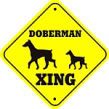| View previous topic :: View next topic |
| Author |
Message |
Rickeezee
Site Moderator

Joined: 18 Nov 2005
Posts: 9249
Location: Kent
|
 Posted: Tue Jan 31, 2006 6:24 pm Post subject: Panther tempreture help please Posted: Tue Jan 31, 2006 6:24 pm Post subject: Panther tempreture help please |
 |
|
Hello
Can anyone please answer the following, thank you.
What minimum and maximum tempretures for daytime, and best average daytime temps for:
Baby Panther
Adult Panther
Same question for night time please
Baby Panther
Adult Panther
Could just cut n paste the above and include answers if that helps.
Cheers Rick
_________________
www.rickslivefood.co.uk
 |
|
| Back to top |
|
 |
Rickeezee
Site Moderator

Joined: 18 Nov 2005
Posts: 9249
Location: Kent
|
 Posted: Wed Feb 01, 2006 8:38 am Post subject: Posted: Wed Feb 01, 2006 8:38 am Post subject: |
 |
|
Pretty please with sugar on!
_________________
www.rickslivefood.co.uk
 |
|
| Back to top |
|
 |
varanus
Key Member
Joined: 14 Oct 2005
Posts: 400
|
 Posted: Wed Feb 01, 2006 1:03 pm Post subject: Posted: Wed Feb 01, 2006 1:03 pm Post subject: |
 |
|
Depends on the panther! 
no im not being a smart arse honest!
some like it warmer than others its up to you to observe and fine tune to find out what yours like as with basically all reptiles but somthing that is rarely said which puzzles me a lot 
_________________
I’m Just So Misunderstood
www.Natureseye.co.uk |
|
| Back to top |
|
 |
Rickeezee
Site Moderator

Joined: 18 Nov 2005
Posts: 9249
Location: Kent
|
|
| Back to top |
|
 |
varanus
Key Member
Joined: 14 Oct 2005
Posts: 400
|
 Posted: Wed Feb 01, 2006 2:09 pm Post subject: Posted: Wed Feb 01, 2006 2:09 pm Post subject: |
 |
|
not the type of panther the exact individual panther
I keep one of my males with a warm spot of 90-93 going down to 80 at night its room temp the other one prefers it at 95 hot spot but doesnt like it to go below 75 at night where as the other one is fine with it down to 65
female doesnt seem to care to much as long as there is lots of food really
_________________
I’m Just So Misunderstood
www.Natureseye.co.uk |
|
| Back to top |
|
 |
Rickeezee
Site Moderator

Joined: 18 Nov 2005
Posts: 9249
Location: Kent
|
 Posted: Wed Feb 01, 2006 2:15 pm Post subject: Posted: Wed Feb 01, 2006 2:15 pm Post subject: |
 |
|
Yep I see what you mean now, bit dense today!
Cheers
Rick
_________________
www.rickslivefood.co.uk
 |
|
| Back to top |
|
 |
jim_radley
CaptiveBred Addict!

Joined: 30 Mar 2005
Posts: 514
Location: Shrewsbury, Shropshire, West Midlands
|
 Posted: Wed Feb 01, 2006 2:34 pm Post subject: Posted: Wed Feb 01, 2006 2:34 pm Post subject: |
 |
|
Lighting & Heating
There is nothing like natural sunlight. Expose your chameleon to as much unfiltered natural sunlight as you can, weather permitting. Unfiltered light consists of natural sun light that does not come through window glass, plastic, or acrylic. These materials filter out most, if not all, of the UVB rays. With indoor housing and little natural sunlight, we need to resort to artificial UVB sources. UVB is an important element in the production of vitamin D3 for your chameleon. D3 is utilized by a chameleon to absorb calcium for healthy bone growth. Without it, the chameleon will most likely develop metabolic bone disease (MBD). MBD is a disease that causes bone deformities from the lack of calcium or D3 in the diet. These effects can be stopped but not reversed.
UVB lighting comes in many different forms. Most commonly, it is found in a fluorescent bulb. There are different amounts of UVB in various bulbs. You will notice a number like 2.0, 5.0, and 8.0 followed by UVB. This number is telling you how much UVB the bulb puts out. For example, a 5.0 UVB bulb puts out a total of 5% UVB light. For chameleons we recommend the Zoomed® Reptisun™ 5.0 UVB fluorescent bulbs. With the UVB bulb, you will also need a heat/basking bulb ranging in size from 60-100w. Your other lighting/heating option is to use a Zoomed® PowerSun™ mercury vapor bulb.
Panthers need a basking site with a temperature of 80-90F. The basking site should be monitored and adjusted according to seasons. During winter months, you may need to use a larger bulb to provide the correct temperature. During summer months, you may need to lower the bulb wattage. You can also adjust the height of the heat/basking bulb from the basking site. A gradient temperature should be provided throughout the cage. Higher temperatures should be present near the basking area, while lower temperatures should be present at the bottom of the cage.
Sourced from: http://www.screameleons.com/site/3398/default.aspx |
|
| Back to top |
|
 |
varanus
Key Member
Joined: 14 Oct 2005
Posts: 400
|
|
| Back to top |
|
 |
varanus
Key Member
Joined: 14 Oct 2005
Posts: 400
|
|
| Back to top |
|
 |
Scott W
Site Admin

Joined: 15 Apr 2004
Posts: 13355
Location: London, England.
|
 Posted: Wed Feb 01, 2006 3:17 pm Post subject: Posted: Wed Feb 01, 2006 3:17 pm Post subject: |
 |
|
done...please test
_________________

Please DO NOT pm orders for reptiles, send email instead scott@captivebred.co.uk |
|
| Back to top |
|
 |
|





